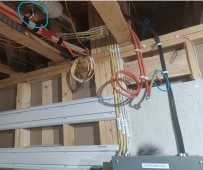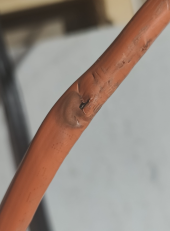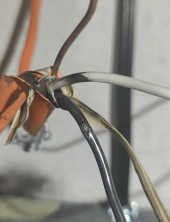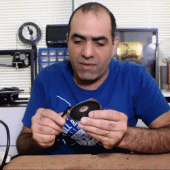Here's a couple of pictures of the setup. In short, my main panel is in another room, so I had to run power to a sub panel, seen on the right next to the battery bank - which feeds the inverters, which feeds the off-grid panel to the left. That panel just feeds loads that I've added new, or moved over from the main panel.

A large bundle of cables come from the main panel to that area in the top left of the below picture - if moving a load, I just turn breaker off in the main panel, cut the wire, cap it, and then add it to a JBox that connects the load to the off-grid panel below. In this case, since this happened late last night and I had to move my AC unit back to the main panel, I just spliced it back together with WAGOs and taped it up temporarily until I can get it either put in its own Jbox, or back to the off-grid panel, spliced in a separate Jbox out of the picture.

The two orange cables are for moving the AC units off-grid. The one on the left is reserved for AC1, a bigger 4 ton unit that I just pre-ran the wire to the Jbox above where I'm standing and the one on the right is for AC2, a smaller 2.5 ton unit.
But as you can see by the burn mark on the concrete backer board, it definitely didn't like the hot leads to the load swapped for some reason - though it also didn't work the other way either. Either way, I figured I could at least put this out there for others to learn from once I figure it out.








